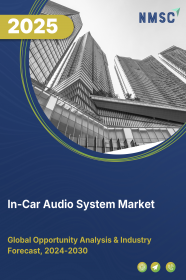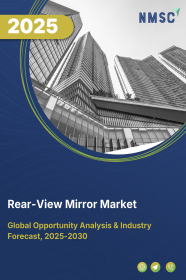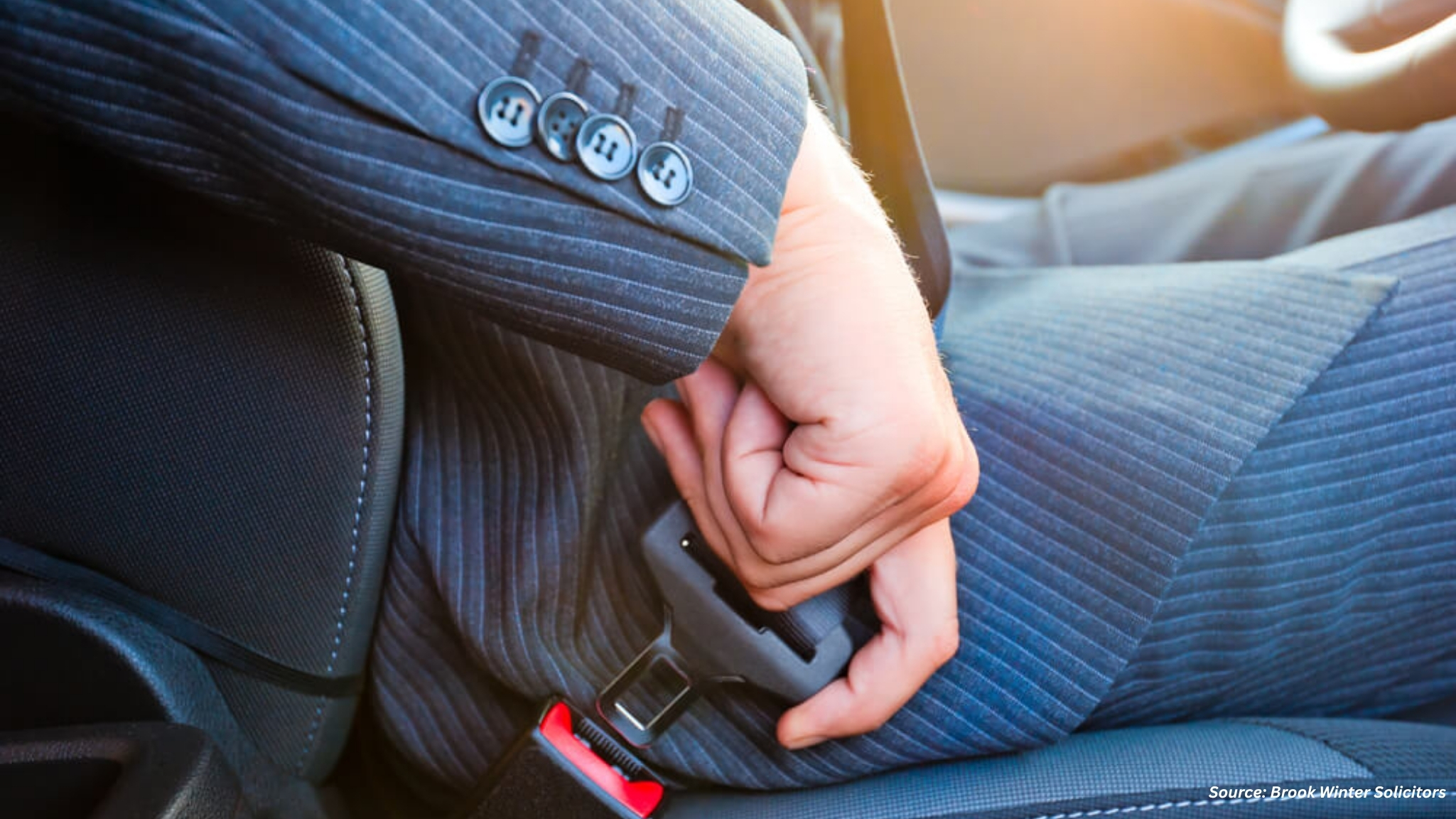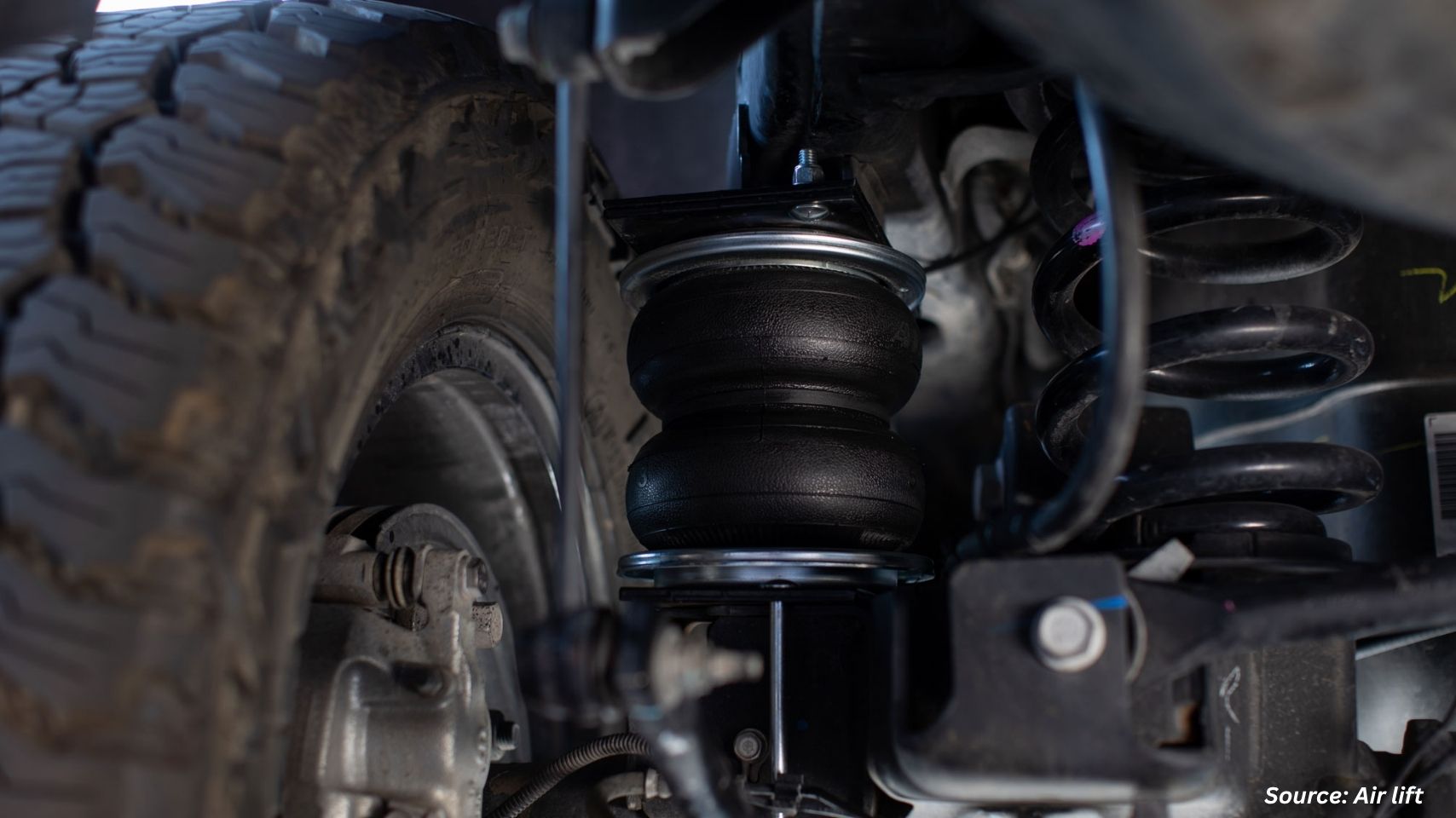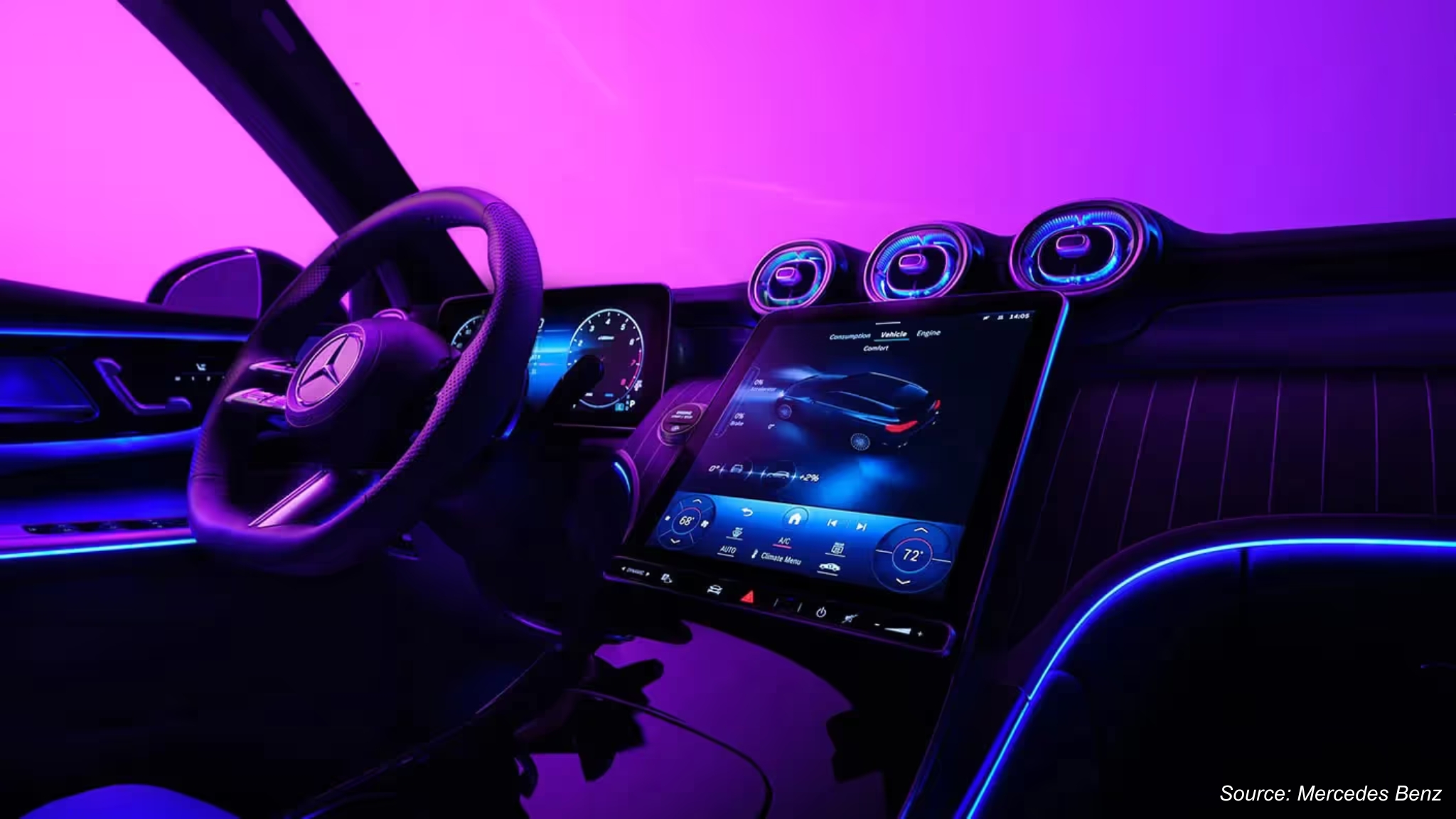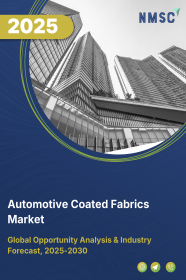
Automotive Coated Fabrics Market by Fabric Type (Polyurethane (PU) Coated Fabrics, Polymer-Coated Fabrics, PE (Polyethylene)-Coated Fabrics, Rubber-Coated Fabrics, and Others), by Vehicle Type (Passenger Cars, and Commercial Vehicles), by Application (Seat Covers, Door Panels, Headliners, Dashboard Covers, and Other Applications), and by Distribution Channel (Original Equipment Manufacturer (OEM) and Aftermarket)- Global Opportunity Analysis and Industry Forecast 2025-2030
Automotive Coated Fabrics Market Overview
The Global Automotive Coated Fabrics Market size was valued at USD 37.75 billion in 2024 and is expected to be valued at USD 39.29 billion by the end of 2025. The industry is predicted to reach USD 48.00 billion by 2030 with a CAGR of 3.3% from 2025-2030.
The automotive coated fabrics market is witnessing strong growth, driven by rising vehicle production, evolving safety regulations, and increasing consumer demand for premium, customizable interiors. As the global automotive sector expands, especially in emerging markets, so does the demand for durable, functional, and aesthetically pleasing interior materials. Regulatory mandates around occupant safety and the use of technical textiles in airbags and seatbelts further reinforce the adoption of coated fabrics. However, at the same time, environmental concerns and stringent emission standards pose challenges, urging manufacturers to innovate with sustainable alternatives. On the contrary, advancements in bio-based and recycled materials offer promising opportunities for market players aiming to align with eco-friendly trends and gain a competitive edge in a sustainability-focused industry landscape.
The Surge in Automotive Production Drives the Market Growth
One of the most significant growth drivers for the automotive coated fabrics market is the sheer volume of vehicles being produced globally. Particularly in rapidly developing economies like China and India, the growth in the automotive industry directly translates to a higher demand for all types of automotive components, including coated fabrics used for seating, interiors, and other applications.
For instance, China is the world's largest automotive production base and is anticipated to reach 35 million vehicles manufacturing by 2025. This robust production rate signifies a considerable market size and growth potential for automotive coated fabric suppliers in the region. Furthermore, as incomes rise and urbanization continues in these nations, the demand for personal vehicles is expected to further fuel this growth, solidifying the automotive sector as a primary driver for the coated fabrics industry size.
Regulatory Push for Protective Automotive Interiors Drives the Market Growth
Safety regulations worldwide play a crucial role in driving the demand for specific types of automotive coated fabrics. Governments mandate the use of coated fabrics in critical safety components such as airbags and seatbelts due to their performance characteristics like durability and reliability. For example, seat belts consume about 1 kg of textile fiber per car and must meet stringent requirements for strength and UV degradation resistance to ensure passenger safety. Similarly, the increasing focus on reducing workplace accidents has led to stricter regulations requiring protective clothing in various industries, indirectly impacting the development and innovation in coated fabric technologies that also find applications in automotive safety features. These regulations not only ensure passenger safety but also create a consistent and growing market demand for high-performance technical textiles like coated fabrics within the automotive sector.
Rising Demand for Customizable and Premium In-Vehicle Interiors Fuels the Market Growth
Beyond the functional and safety aspects, the increasing consumer preference for comfortable and visually appealing car interiors is a significant driver for the automotive coated fabrics market. Coated fabrics offer a wide range of textures, colors, and finishes, allowing automotive manufacturers to design attractive and comfortable seating and interior surfaces. The demand for luxurious interiors and the growing awareness of the advantages of coated fabrics, such as their durability and ease of maintenance, are contributing to the market growth.
For instance, OMNOVA (now part of Synthomer PLC) supplies high-performance coated fabrics to global auto OEMs, recognized for their design, eco-friendly attributes, and lasting performance, indicating the importance of these factors in consumer-driven demand. As consumers become more discerning about their vehicle interiors, the market share for coated fabrics that meet these aesthetic and comfort requirements is expected to expand.
Stringent Environmental Regulations Hinders the Market Growth
Notable restraint for the automotive coated fabrics market is the increasing pressure to meet stringent environmental regulations. The production and disposal of traditional coatings, particularly those based on PVC, raise environmental concerns. The industry is facing the challenge of developing more sustainable alternatives, such as water-based coatings and bio-based materials, while maintaining the required performance and durability standards for automotive applications. The shift towards eco-efficiency is a growing market requirement, pushing companies to invest more in R&D for sustainable solutions. Meeting these environmental standards and reducing the carbon footprint of automotive coated fabrics is becoming increasingly important for long-term market sustainability and acceptance.
Green Material Advancements in Automotive Interiors Creates Opportunities for the Market Growth
One significant opportunity for players in the automotive coated fabrics market lies in the development and commercialization of bio-based and recycled coated fabrics. With growing environmental awareness and stricter regulations, the demand for more sustainable materials in the automotive sector is on the rise. Several imitation leather materials produced from renewable feedstocks are emerging as alternatives for car interiors. Companies that innovate and offer high-performance coated fabrics made from recycled polymers or bio-based sources like olive pomace will gain a competitive advantage. This trend aligns with the automotive industry's increasing focus on light weighting and reducing the environmental impact of vehicles, including their interior materials. By investing in research and development of these eco-friendly alternatives, industry players tap into a growing market segment and contribute to a more sustainable automotive future.
For instance, BMW has partnered with the Mexican firm Desserto to develop Deserttex, a cactus-based vegan leather alternative. This initiative reflects a strategic move toward replacing conventional animal leather in vehicle interiors with sustainable, bio-based materials. The collaboration is aimed at minimizing the environmental impact of automotive interiors while aligning with the industry’s broader goals of reducing carbon footprint and enhancing material sustainability.
Market Segmentation and Scope of Study
The global automotive coated fabrics market is segmented by fabric type, vehicle type, application, distribution channel, and region. By fabric type, the market includes polyurethane (PU) coated fabrics, polymer-coated fabrics, PE (polyethylene)-coated fabrics, rubber-coated fabrics, and others. By vehicle type, market is categorized into passenger cars, and commercial vehicles. Commercial vehicle is further divided into light commercial vehicles and heavy-duty commercial vehicles. By application, the market is segmented into seat covers, door panels, headliners, dashboard covers and other applications. On the basis of distribution channel, market is divided into original equipment manufacturer (OEM) and aftermarket. Regional breakdown and analysis of each of the aforesaid segments includes regions comprising of North America, Europe, Asia-Pacific, and RoW.
Geographical Analysis
In North America, the United States maintains a crucial role in the development of the coated fabrics market. The region is projected to experience considerable growth during the forecast period, fueled by the high adoption of advanced technology and the presence of major industry players, which creates significant growth opportunities. Furthermore, there's a noticeable focus on sustainability and adherence to regulatory standards in this region. Canada also plays a significant role, being the leading exporter of PVC-coated fabrics to the U.S., benefiting from zero tariffs, which enhances its competitivene0ss. The emphasis on high-performance and specialized applications seems to be a key characteristic of the North American market.
Europe is also anticipated to witness substantial growth in the global coated fabrics market, with a strong CAGR expected from 2024 to 2031. Investments in automotive production in countries like Hungary indicate a continued demand for automotive coated fabrics in the region. Similar to North America, there's a growing emphasis on sustainability and compliance with environmental regulations, influencing the market trends towards more eco-friendly coating alternatives. Germany, with its focus on premium-quality, specialized industrial applications, including automotive and medical textiles, holds a strong position in the premium segments despite tariffs.
The Asia-Pacific region is poised to be the frontrunner in terms of market growth for coated fabrics in the coming years. Countries like China and India are projected to be major contributors, driven by their expanding automotive, furniture, and protective clothing industries. The massive industrial growth and rapid urbanization in China are key factors supporting this expansion. Increasing automotive sales in China and India are directly translating to higher demand for automotive coated fabrics. Furthermore, stringent government regulations emphasizing worker safety are fueling the demand for protective clothing in this region. The sheer volume of production and consumption in Asia-Pacific gives it a dominant market share in the global coated fabrics industry.
Finally, the rest of the world region also presents notable developments. Brazil, as one of the largest emerging economies with a significant automotive market, directly impacts the coated fabrics market. Growth in infrastructure and construction activities, particularly in the Middle East and Africa, is expected to fuel the demand for coated fabrics in applications like roofing and architectural structures. The increasing demand for protective clothing in various sectors within these regions, driven by industrial activity and a growing focus on safety, also contributes to the market growth potential. While potentially not as dominant in terms of overall market size compared to the other regions, the rest of the world still holds considerable growth potential across various applications of coated fabrics.
Strategic Positioning in the Automotive Coated Fabrics Market
Within the dynamic automotive coated fabrics industry, key players are strategically focusing on sustainability and technological advancements to maintain and grow their market share. For instance, BASF Coatings is innovating with color concepts using renewable materials, while AkzoNobel is developing bio-based interior paints and waterborne coatings to meet increasing sustainability requirements. Companies like PPG are investing in R&D to create coatings suitable for lightweight substrates and exploring technologies for future autonomous vehicles, such as intelligent coating sensors.
Moreover, expansions in high-growth regions like China and India, where the automotive industry size is substantial and growing, represent a key strategy, with companies establishing new facilities to cater to local OEMs. However, these players face challenges such as fluctuating demand in mature markets and the need to adapt to evolving raw material supply chains. The increasing focus on eco-efficiency and stringent regulations also necessitate significant investment in developing environmentally friendly solutions. Despite these hurdles, the future holds considerable growth potential. This is driven by the rising demand for comfortable interiors, the shift towards EVs requiring lightweight materials, and the ongoing emphasis on safety features like airbags, all contributing to the expansion of the automotive coated fabrics market.
KEY BENEFITS
-
The report provides quantitative analysis and estimations of the automotive coated fabrics market from 2025 to 2030, which assists in identifying the prevailing market opportunities.
-
The study comprises a deep-dive analysis of the automotive coated fabrics market including the current and future trends to depict prevalent investment pockets in the market.
-
Information related to key drivers, restraints, and opportunities and their impact on the automotive coated fabrics is provided in the report.
-
Competitive analysis of the players, along with their market share is provided in the report.
-
SWOT analysis and Porters Five Forces model is elaborated in the study.
-
Value chain analysis in the market study provides a clear picture of roles of stakeholders.
Automotive Coated Fabrics Market Key Segments
By Fabric Type
-
Polyurethane (PU) Coated Fabrics
-
Polymer-Coated fabrics
-
PE (Polyethylene)-coated fabrics
-
Rubber-Coated fabrics
-
Others
By Vehicle Type
-
Passenger Cars
-
Commercial Vehicles
-
Light Commercial Vehicles
-
Heavy Duty Commercial Vehicles
By Application
-
Seat Covers
-
Door Panels
-
Headliners
-
Dashboard Covers
-
Other Applications
By Distribution Channel
-
Original Equipment Manufacturer (OEM)
-
Aftermarket
By Region
-
North America
-
The U.S.
-
Canada
-
Mexico
-
-
Europe
-
The UK
-
Germany
-
France
-
Italy
-
Spain
-
Denmark
-
Netherlands
-
Finland
-
Sweden
-
Norway
-
Russia
-
Rest of Europe
-
-
Asia-Pacific
-
China
-
Japan
-
India
-
South Korea
-
Australia
-
Indonesia
-
Singapore
-
Taiwan
-
Thailand
-
Rest of Asia-Pacific
-
-
RoW
-
Latin America
-
Middle East
-
Africa
-
Key Players
-
PPG Industries, Inc.
-
BASF SE
-
Continental AG
-
Trelleborg AB
-
Serge Ferrari Group
-
Haartz Corporation
-
Omnova Solutions Inc.
-
Axalta Coating Systems Ltd.
-
Polynova Industries Pvt Ltd
-
Kusumgar Limited
-
ALFATEX ITALIA SRL
-
Worthen Industries
-
Miliken & Company
-
SRF Group
-
Monteiro Fabrics
REPORT SCOPE AND SEGMENTATION:
|
Parameters |
Details |
|
Market Size in 2024 |
USD 37.75 Billion |
|
Revenue Forecast in 2030 |
USD 48.00 Billion |
|
Growth Rate |
CAGR of 3.3% from 2025 to 2030 |
|
Analysis Period |
2024–2030 |
|
Base Year Considered |
2024 |
|
Forecast Period |
2025–2030 |
|
Market Size Estimation |
Billion (USD) |
|
Growth Factors |
· The surge in automotive production drives the market growth. · Regulatory push for protective automotive interiors drives the market growth. · Rising demand for customizable and premium in-vehicle interiors fuels the market growth. |
|
Countries Covered |
28 |
|
Companies Profiled |
15 |
|
Market Share |
Available for 10 companies |
|
Customization Scope |
Free customization (equivalent to up to 80 working hours of analysts) after purchase. Addition or alteration to country, regional, and segment scope. |
|
Pricing and Purchase Options |
Avail customized purchase options to meet your exact research needs. |

















 Speak to Our Analyst
Speak to Our Analyst




